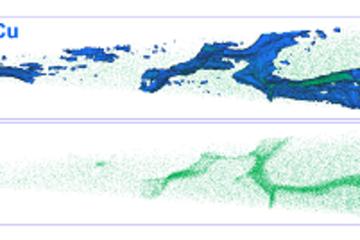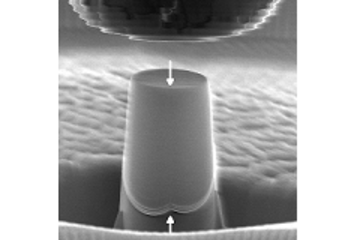All genres
121.
Conference Paper
Localised Photoelectrochemical Measurement with the Scanning Droplet Cell. Passivity and Localized Corrosion: International Symposium in Honor of Professor Norio Sato. Electrochem. Soc. Proc. PV 99-27, pp. 337 - 342 (1999)
122.
Conference Paper
The Scanning Droplet Cell: Experimental Results and Determination of the Potential Distribution. Proceed. Japan Soc. Corr. Engineer. Mater. Environments 1998, pp. 293 - 296 (1998)
123.
Conference Paper
Elektronische und ionische Transportprozesse in ultradünnen Aluminiumoxidschichten. Oberflächentechnik '95, DGO Jahrestagung 33, pp. 31 - 34 (1995)
124.
Conference Paper
Ionic Relaxation in Thin Anodic Valve Metal Oxide Films. Electroceramics IV, pp. 53 - 58 (1994)
125.
Talk
A new model for microbiologically influenced corrosion. The European Corrosion Congress Eurocorr 2010, Moscow, Russia (2010)
126.
Talk
High throughput growth and in situ characterization of anodic oxides on Ti, Ta and Hf combinatorial alloys. “Electrochemistry: Crossing Boundaries”, GDCh, Gießen, Germany (2008)
127.
Talk
Impedance-Titration: A Novel Method for Understanding the Kinetics of Corrosion in Aqueous Solutions. 59th Annual Meeting of the International Society of Electrochemistry, Sevilla, Spanien (2008)
128.
Talk
Progress in the Electrochemical Processing of Directionally Solidified Eutectics. 7th International Symposium on Electrochemical Micro- and Nanosystems, Ein-Gedi, Israel (2008)
129.
Talk
Nanowires and Nanowire Arrays by an Electrochemical Structuring of Directionally Solidified Eutectics. 59th Annual Meeting of the International Society of Electrochemistry, Sevilla, Spain (2008)
130.
Talk
Combinatorial microelectrochemistry using an automated scanning droplet cell. 59th Annual Meeting of the International Society of Electrochemistry, Sevilla, Spanien (2008)
131.
Talk
Microelectrochemical Investigations of Interfaces and Surfaces of Advanced Materialks. 7th International Symposium on Electrochemical Micro- and Nanosystems, Ein-Gedi, Israel (2008)
132.
Talk
Microbial corrosion induced by a new highly aggressive SRB strain. 59th Annual Meeting of the International Society of Electrochemistry, Sevilla, Spain (2008)
133.
Talk
New Approaches in Materials Science with the Scanning Droplet Cell. Seminarvortrag an der Universität von Hokkaido, Sapporo, Japan (2008)
134.
Talk
Tailoring of Nanostructured Alloys by Anodisation. International Smposium on Anodizing Science and Technology 2008, Rusutsu, Japan (2008)
135.
Talk
High throughput synthesis and characterization of anodic oxides on valve metal combinatorial libraries. 2nd International IMPRS-SurMat Workshop on Surface and Interface Engineering in Advanced Materials, Bochum, Germany (2008)
136.
Talk
Nanostructuring of alloy surfaces. Colloquium des Sonderforschungsbereichs 569, Ulm, Germany (2008)
137.
Talk
Fabrication of Iso-oriented Gold Nanobelt Arrays from an Fe–Au Eutectoid. 9th International Conference on Nanostructured Materials, Rio de Janerio, Brazil (2008)
138.
Talk
Novel self-organised Re nanostructures. 9th International Conference on Nanostructured Materials, Rio de Janerio, Brazil (2008)
139.
Talk
The scanning droplet cell in corrosion research. 8th Israel Conference on Corrosion, Haifa, Israel (2008)
140.
Talk
Metal nanowires – electrochemical release, modification and applications. 24th One-Day-Symposium, Electrochemical Materials Processing, Villigen, Schweiz (2008)











